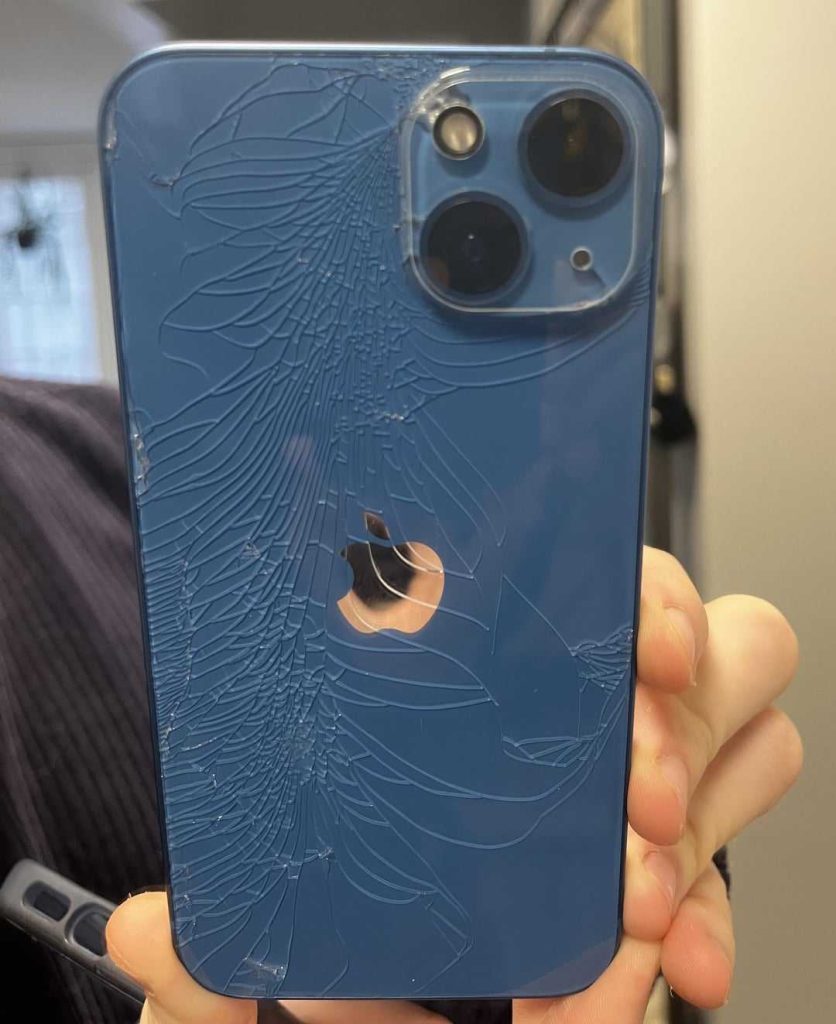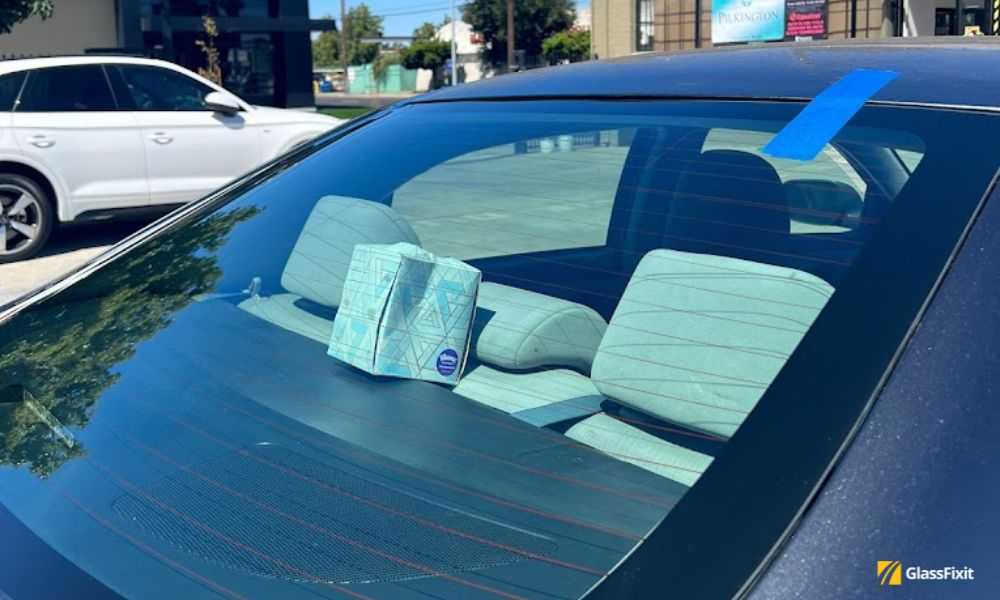Yes, cold weather can cause a rear windshield to crack, especially if there are existing chips or weaknesses. Rapid temperature drops or extreme cold can put stress on the glass, increasing the risk of cracks or breakage.
In short, cold weather can indeed crack a rear windshield, particularly when the glass is already compromised, or there are sudden temperature shifts. Proper precautions and timely repairs can help prevent damage during chilly months.
The chill of winter brings more than just icy winds and snow; it can also turn out to be a hidden threat to your vehicle’s rear windshield. When temperatures plummet, the glass contracts, and if there are any pre-existing chips or minor cracks, they may expand or worsen under the stress. Sudden temperature changes — like using the defroster or blasting hot air on a cold windshield — can intensify this effect, potentially causing the glass to crack completely. Knowing how cold weather impacts your car’s glass and taking simple steps to protect it can save you from costly repairs and untimely replacements. Keep reading to discover how to minimize this risk and keep your rear windshield safe through winter’s harshest days.
Can Cold Weather Crack Rear Windshield?
Understanding How Cold Weather Affects Car Windshields
Cold weather can impact your vehicle in many ways, especially the windshield. When temperatures drop significantly, the materials used in the glass and the adhesives holding the windshield in place can become more vulnerable. The main concern is whether the cold can cause the rear windshield to crack or break.
Car windshields are made from laminated glass, consisting of two layers of glass with a plastic layer in between. This construction helps absorb impacts but can be affected by extreme cold. When temperatures plummet, the glass becomes more brittle, increasing the chance of cracks forming if minor flaws are present.
In addition, the adhesives used to secure the rear windshield can contract in cold temperatures. This contraction may weaken the bond between the glass and the vehicle frame, making it easier for cracks to develop if stress is applied. It is essential to understand these effects to protect your car and ensure safety during winter months.
Can Cold Weather Directly Cause the Rear Windshield to Crack?
Cold weather itself does not directly cause the rear windshield to crack, but it plays a significant role in contributing to conditions that can lead to cracks. Rapid temperature changes are often the primary culprits behind windshield damage in winter.
For example, if your car is parked outside overnight in freezing temperatures and then driven into a warm garage or sunny area, the difference in temperature can cause the glass to expand and contract quickly. This rapid thermal stress can lead to existing small chips or cracks expanding abruptly.
Moreover, snow and ice buildup can add extra weight and stress on the rear windshield, especially if the windshield is already weakened. The combination of frequent temperature swings and mechanical stress increases the risk of cracks forming or worsening under cold weather conditions.
Common Causes of Rear Windshield Cracks in Cold Weather
Various factors can heighten the risk of cracking your rear windshield during winter. Understanding these causes helps in preventing damage and maintaining the integrity of the glass.
- Rapid temperature changes from cold to warm environments
- Physical impacts from snow shovels or ice scrapers
- Pre-existing chips or minor cracks that worsen in cold
- Heavy snow or ice accumulation causing stress on the glass
- Driving over rough, icy, or uneven roads that increase vibrations
- Incorrect removal of ice or snow, which can scratch or stress the glass
For instance, using too much force when scraping ice can create new cracks or worsen existing damage. Similarly, parking in shady areas or exposed outdoor spots can lead to the windshield experiencing more significant temperature fluctuations.
How Temperature Fluctuations Influence Windshield Integrity
Temperature fluctuations are especially damaging to windshields during winter. When the outside air becomes colder, the glass contracts, and if it heats up suddenly, it expands. This constant movement can cause tiny flaws or existing cracks to spread.
The rapid expansion and contraction cause thermal stress within the glass. Over time, this stress weakens the structural integrity of the windshield, making it more susceptible to cracking or shattering under minimal pressure.
For example, a vehicle parked outside overnight and then heated internally or exposed to sunlight will experience uneven thermal expansion. This uneven force can push already weak points beyond their limits, resulting in new cracks or the expansion of existing ones.
Signs That Your Rear Windshield Is at Risk in Cold Weather
Detecting early signs of potential damage can save you from costly repairs later. Watch out for these indicators during winter:
- Small chips or cracks that seem to grow over time
- Unusual rattling or vibrations from the rear windshield
- Water leaks or moisture accumulation inside the vehicle
- Visible stress lines radiating from the edges of the glass
- Loose or shifted windshield positioning after temperature changes
If you notice any of these signs, it’s wise to have your rear windshield inspected by a professional. Addressing small issues early can prevent cracks from spreading or the need for complete replacements.
Preventative Measures to Avoid Cracks During Cold Weather
Preventing damage to your rear windshield in winter involves simple steps tailored to climate conditions.
First, avoid sudden temperature shifts by parking your vehicle in a garage or shaded area whenever possible. This practice helps maintain a more consistent temperature, reducing thermal stress.
Second, be gentle when removing snow and ice from your vehicle. Use a soft snow brush and a plastic ice scraper to prevent scratches and cracks.
Third, do not pour hot water on icy windshields, as the rapid temperature change can cause stress fractures. Instead, defrost the glass gradually with the vehicle’s defrost system.
Fourth, regularly inspect your windshield for small chips or cracks, especially after harsh weather conditions. Repair minor damage promptly to prevent cracks from expanding.
Lastly, consider installing a windshield cover to keep snow and ice away and minimize the need for aggressive cleaning or scraping.
What to Do If Your Rear Windshield Cracks in Cold Weather
If your rear windshield does crack during winter, act quickly to minimize damage. First, avoid driving the vehicle if the crack is large or spreading rapidly, as this can obstruct your view and compromise safety.
Next, contact a professional auto glass repair service to evaluate the damage. Many cracks can be repaired if caught early, saving you money and time.
It’s crucial to avoid using DIY methods like sealing a crack with tape or glue, as these are temporary and often ineffective. Professional repairs ensure the job is done safely and thoroughly.
In extreme cases where the crack is extensive, replacing the entire rear windshield might be necessary. This process should be handled by trained technicians, especially in cold weather, to ensure proper installation and adhesion.
Summary of Key Points
- Cold weather does not directly cause cracks but weakens the windshield’s resilience.
- Rapid temperature changes are major contributors to crack formation.
- Existing small cracks or chips are more likely to worsen in winter.
- Preventative steps include parking in sheltered areas, gentle snow removal, and regular inspections.
- Immediate professional repair prevents further damage and maintains safety.
Maintaining awareness of how winter conditions influence your vehicle’s windshield can save you money and ensure safety on the road. Proper care and timely intervention are essential, especially during the colder months when your rear windshield is most vulnerable to damage.
Hot temperatures can cause cracks and chips in windshields to worsen
Frequently Asked Questions
Can sudden temperature drops cause existing cracks in the rear windshield to worsen?
Yes, rapid decreases in temperature can cause existing cracks to expand. Cold weather causes glass to contract, and if there are already small chips or cracks, the stress from the temperature change can make them grow larger or deepen. This is particularly true if the cracks are subjected to additional pressure or vibrations while the weather is cold.
Does frost or ice formation pose a risk to the rear windshield during winter?
Frost and ice buildup can exert extra pressure on the rear windshield if you attempt to scrape or remove them forcefully. Using excessive force or scraping with sharp objects can cause existing cracks to propagate or create new damage. It’s best to use gentle methods, such as thawing with windshield de-icer, to safely clear the glass.
Can driving in extremely cold temperatures cause new cracks to form in the rear windshield?
Driving in very cold weather by itself doesn’t directly cause new cracks, but rapid temperature fluctuations—such as heating the car interior quickly or exposure to extremely low temperatures—can stress the glass. If the windshield has existing weaknesses, these stresses can lead to crack formation or expansion over time.
How do temperature changes affect the structural integrity of rear windshields?
Temperature fluctuations cause the glass to expand and contract, which can weaken the bond between the glass and surrounding components or adhesives. Over time, repeated cycles of heating and cooling may compromise the windshield’s integrity, especially if it already has minor imperfections or previous damage.
What precautions should I take in cold weather to prevent rear windshield cracking?
To prevent damage during cold weather, avoid sudden temperature changes by warming up your vehicle gradually. Use a windshield cover or park in sheltered areas to protect the glass from frost. When clearing ice or snow, use plastic tools rather than metal, and do not apply hot water or forceful scraping, which can induce cracks or worsen existing ones.
Final Thoughts
Cold weather can cause rear windshields to crack, especially if there are existing chips or weaknesses. Sudden temperature changes make glass expand and contract, increasing stress.
While cold alone isn’t the sole cause, it weakens the glass and makes it more prone to damage.
Can cold weather crack rear windshield? Yes, it can, particularly with additional impacts or stress.
Pay attention to any chips and avoid drastic temperature shifts to prevent further damage.



